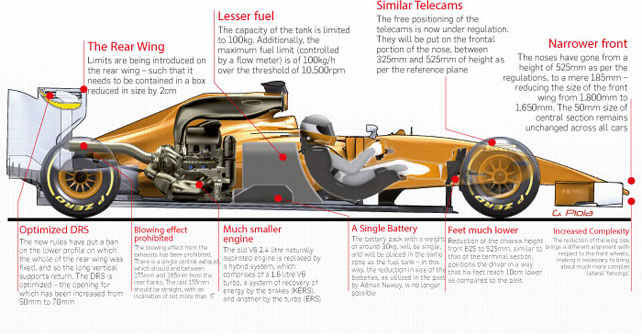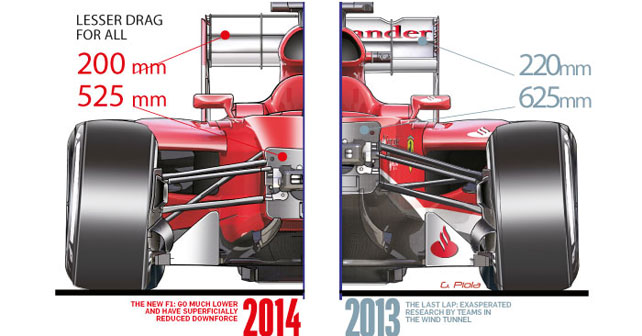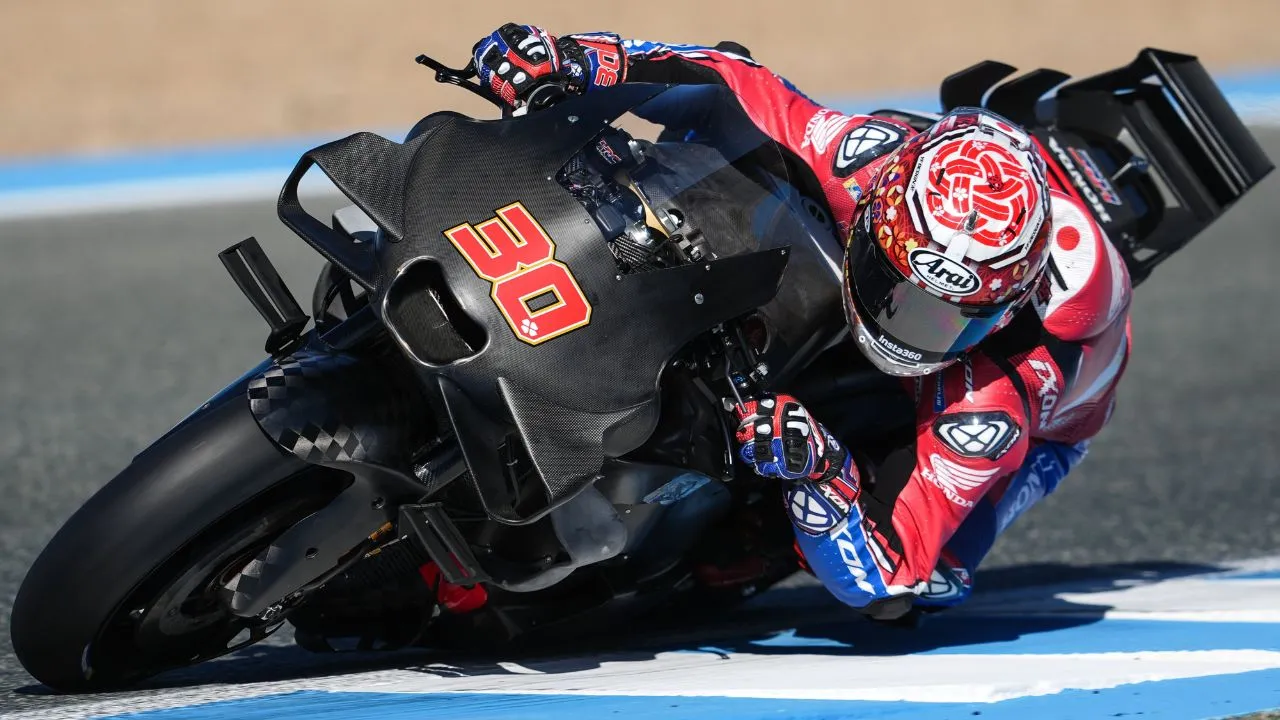The Formula 1 Changing Revolution
The highest category of racing changes its skin – the V6 turbo-engines have been reduced in size. Not only that, they’re actually hybrids with lower fuel consumption, and the cars also generate less downforce.
The highest category of racing changes its skin – the V6 turbo-engines have been reduced in size. Not only that, they’re actually hybrids with lower fuel consumption, and the cars also generate less downforce. Here’s hoping that this experiment increases the transfer of technology towards road-going machines.

Formula 1 is changing at the core. The FIA, headed by Jean Todt, has enforced a real technical revolution for 2014 – the biggest seen in the last twenty-five years. The rules have been tweaked – substantially – with the objective to making the racing arena a research bank for road cars. “We’re not building rockets,” said Luca de Montezemolo, President of Ferrari. “The aerodynamics had become too conditioned. We’re not designing wings and flaps for going to Mars.” The new norms have touched each aspect of the single-seater – for three specific results: drastic reduction in fuel consumption (said to be around 35%) aiming at more efficient engine performance, a significant drop in downforce, and an increase in safety.
The Hybrid V6 Turbo
Nowadays no one talks of simply an engine, but of the power unit – the new element being the return of the turbocharger (single) on the V6 engine with a 1.6 litre cubic-capacity, fitted with direct fuel injection at 500 bar pressure (a value never reached with petrol engines). The six 90-degree cylinders are integrated by two electric motors with an energy revival mechanism that has given birth to the ERS (Energy Recovery System). The first is KERS, which has double the capacity as compared to that of 2013 (around 120kW or 160bhp), moving at 32,000rpm, it’s useable for 33 seconds per lap (against the earlier 6). The second is the Motor generator unit, which recovers the waste heat of the turbo and can generate upto 90kW of power at 120,000rpm. The battery that collects the energy from the electric motors has a capacity of 2 mega joules, and is mandated to be mounted under the petrol tank – a safe zone of the car, which isthe most protected from impact.
Power: 650bhp?
The power unit, in its first phase, should reach a combined figure of over 650bhp, against that of the naturally aspired 750bhp of the latest V8. But, once the necessary reliability is reached, the intention is to reach a power value similar to that of 2013 – since only five engines per season will be allowed for use by each driver (against eight used last year). This rule permits arpm capacity of 15,000rpm, but none of the three present manufacturers (Ferrari, Mercedes and Renault) will touch the limit owing to strict limits on fuel consumption. In fact, the maximum fuel capacity is 100kg/h under the threshold of 10,500rpm, and will be controlled by a flow meter. It’s plausible to think that one will begin with a capacity of 12,500rpm. Each of the manufacturers have taken up an exclusive manufacturer for the turbocharger – Honeywell (ex Garrett) by Ferrari, IHI by Mercedes, and BorgWarner (ex-KKK) by the Renault. The gears can have eight speeds, in place of the usual seven, but with a single set of gear ratios for the season.
No lower rear wing
If the mechanical revolution has been incisive, the structural one has been no less. The drastic reduction in the height of the body at the front end, above all the nose (which has been quite high in the last few years), and compression of the front wing to 150mm, easily make the new F1 cars stand apart. The aerodynamics do not become impaired only by reduction in size of the front wing, but by the total knockout of the lower rear one. The 2014 rules, in addition, ban the blowing effect of the exhausts, which used to render the diffuser extremely efficient with the creation of a sort of ‘thermal miniskirt.’ The single exhaust now should be over the top, and have a central terminal that finishes beyond the rear axle. The last 150mm of the pipe should be straight and at a maximum inclination of 5-degrees. It’ll be interesting to see how the designers will be able to recover the huge loss in downforce. They say that Lotus, for the E22, researched the 2013 data without the exhaust effect along with some bold design choices – some of which have already been rejected by the FIA.
The Diving Nose
The reduction in the height of the nose is noticeable – they’ve come down from 525mm to 185mm (measured 700mm from the front axle). The position of the telecams has been set by the rules – they need to be attached to the frontal portion of the nose – in a space between 325 and 525mm of the reference plane. The teams will have to come up with original solutions to design a sort of ‘keel’ for the nose, in an attempt to respect the measurements given in the rules without hindering the passage for airflow channelled under the body towards the rear diffuser – to increase the downforce. Of course, this particular regulation has caused some rather suggestive designs on the front of several F1 cars for 2014.
Narrow rear wing
The size of the rear wing is substantially reduced, coming down from 1,800mm to 1,650mm, while the central section remains unchanged at 50mm, by a neutral design for all single-seaters. In action, other than reducing downforce, it’ll avoid the need to pit for a replacement wing every time there’s even minimum contact between two cars.
The Chassis
The height of the chassis has been reduced from 625mm to 525mm, with the terminal portion unchanged. The position of the spine and pelvis of the driver has not changed – but, due to the effect of these changes, the feet are now positioned 10cm lower. Under the shell and the nose the airflow diverters could be present, but they’ll be more contained in form due to the shortening of the chassis. The fuel tank will have a maximum capacity of 100kgs of fuel. The battery pack is single and should be positioned in the tank area. The KERS, bigger than what was used in the past, will be mounted on the left side of the engine.
Deformable structure
The lateral deformable structures for the protection of the chassis will also change, with more protruding double cones, which will make the front portion of the flanks sturdier. FIA has okayed this project developed by Red Bull for all, and, thus, it is no longer necessary to put the shell under testing for lateral crashes – seen that the solution has taken care of the required safety standards.
Rear Spoiler
The height of the rear wing has been limited to 20mm. DRS optimisation has been allowed – the opening of the adjustable wing increases from 50mm to 70mm. With the vanishing of the rear lower profile, we will again be seeing the central support with two shafts.
Brake system and brake-by-wire
The range of pressure in the brake system, determined by the functioning of the hybrid system recharge, permits mounting of carbon discs – which are of a lesser diameter than 2013. The FIA technicians have conceded to the introduction of an electronic brake control system, but only on the rear end. The brake-by-wire has become indispensable for balancing the disconnect – the range of the brake system, in fact, could vary as and when one of the hybrid systems is recharged or even both together. The driver, instead, needs to have a precise reference for finding the braking point – only electronic management of the system will permit a constant balance of the vehicle performance. This in fact, is truly a revolution, the effects of which will only be measurable on the track in Melbourne on the 16th of March.

Rules of the Game
A POINT BASED LICENSE, ALSO FOR THE DRIVERS
It’s not only a technical revolution in F1, as the 2014 championship also proposes to add important novelties to the sport’s rulebook. The FIA has decided to double the points of the last GP, which will take place at Abu Dhabi – in the hope of keeping the championship open till the last race. Assigning each driver a fixed number will also come into force, which they will have to maintain all throughout their career. The point based super-license also springs into action – the driver who accumulates 12 penalty points over a period of 12 months will land himself in for disqualification for one race. The count of 12 months will start from the point he commits his first offense. The points will be counted on the basis of the reference table for violations. The drivers will also be penalized for the grid position after the fifth change of the power unit (divided into six modules: engine, turbocharger, generator for electric propulsion, energy accumulator, electronic control, and battery). When any one of the six parts is changed, he will gain a penalty of ten positions from the starting grid. On the change of the sixth part, instead, he’ll receive a penalty of five positions. If over a weekend of racing, the whole power unit is changed, the driver will start the next race from the pit lane. If a driver qualifies to be too far out for discounting of penalties, the positions will have to be paid for in the next race. The changes should last for at least six consecutive GP’s. If a change comes before that, early replacement will cost five positions from the start.
© Riproduzione riservata











Write your Comment on